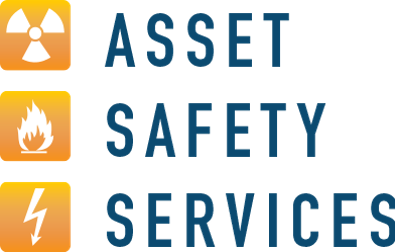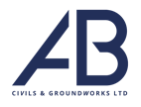Title Page
-
Conducted on
-
Prepared by Manager
-
Employee Name
-
Occupation
-
Age
-
Years Employed
-
Years working in Occupation
-
It is company policy to ensure the health and safety of all employees. To comply with the minimum health surveillance standards across our industry, we have produced a series of self assessment questionnaires to be completed by all employees who may be at risk. These assessments herein will help to identify possible symptoms in the earliest stages and ensure a prompt response with treatment. The following self assessment questionnaires should be completed.
1. Hand-Arm Vibration Syndrome
2. Noise-Induced Hearing-Loss
3. Skin Disorders
4. Respiratory Conditions
5. Musculoskeletal Disorders
The questionnaires will be kept on file at head offices. If identification of a problem is raised, employees will be sent to see an occupation health specialist for an assessment.
Where there is a higher risk to health, more active monitoring will take place.
Hand-Arm Vibration
-
Hand Arm Vibration (HAV) is vibration transmitted from work processes into workers hands and arms. It can be caused by operating hand-held power tools (such as road breakers), hand-guided equipment (such as compactors), or by holding materials being processed by machines (such as pedestal grinders).
Regular and frequent exposure to HAV can lead to a combination of neurological, vascular and musculoskeletal symptoms, (collectively referred to as hand arm vibration syndrome [HAVS] and this is most likely when contact with a vibrating tool or work process is a regular part of a person’s job. Occasional exposure is unlikely to cause ill health.
Identifying the signs and symptoms at an early stage is crucial to preventing serious long-term health effects -
Have you been using hand-held vibrating tools or machines during your working duties? If NO, go to Section 2.
-
Have you used vibrating tools in past employment? Give Details
-
Do you have numbness or tingling in the fingers for over twenty minutes after using vibrating equipment? Give Details
-
Do you have numbness or tingling of the fingers at any other time? Give Details
-
Do your fingers go white on cold exposure or show visible symptoms of HAVS? Give Details
- Yes
- No
- N/A
-
Are you experiencing any other problems in your hands or symptoms extended to arms? Give Details
-
Do you have difficulty in picking up small objects e.g. nails, screws, buttons etc? Give Details
-
Have you lost the sense of touch in your fingers? Give Details
-
Please show the position of any symptoms by circling the the illustration
Noise Induced Hearing Loss
-
Noise-induced hearing loss (NIHL) is hearing decrease caused by loud sound. Evidences of workplace NIHL include a history of exposure to loud sound from power tools and machinery. The loud sounds result in the over-stimulation of the hearing cells leading to cell death. NIHL can occur suddenly by intense noise e.g. explosions, or gradually over time through constant exposure.
-
Do you work in a noisy environment?
-
Have you previously worked in a noisy environment?
-
Do you currently have a diagnosed hearing condition?
-
Do you have difficulty hearing other people in noisy environments?
-
Do you have difficulty hearing other people in quiet environments?
-
Do you require the volume on audible devices to be louder than normal?
-
Is there a ringing or constant noise in your ears?
-
Do you ask people to repeat themselves because you don’t hear them very well?
Skin Disorders
-
Working with certain products and substances can lead to various skin disorders those being most common are eczema and dermatitis. Other symptoms may occur to individuals such as burns, skin cancers, sensitization and urticaria. All these conditions are common and preventable.
-
Do you work with materials or substances which are known to cause skin conditions?
-
Do you currently suffer from any type of skin condition?
-
Is your skin cracking, flaking or scaling?
-
Have you taken time off work due to a skin condition?
-
Has your working duties caused or contributed to your condition?
-
Do you wear gloves when at work?
Respiratory Conditions
-
Breathing in foreign particles, dust, vapors etc. can have a serious effect on a person’s health. Conditions to the respiratory tract, trachea, bronchi, and alveoli are all possible. Diseases to the lungs are a possibility from foreign dusts, fibres and vapors etc. such as asbestos and silicosis. All these ailments are preventable.
-
Do you suffer from a known respiratory condition?
-
Have you visited a Doctor in relation to a respiratory condition?
-
Have you taken time off work in the last twelve months due to respiratory problems?
-
Are you suffering from wheezing, rasping, shortness of breath or chest tightening during normal activities?
-
Do you suffer from the any of the above ailments during light exercise, more than normal?
Musculoskeletal Disorders (MSD)
-
An MSD is an injury or pain to the body’s joints, muscles, ligaments, nerves and tendons. These conditions are inflammatory and degenerative conditions which cause pain and restrict normal movements. MSD’s can arise from sudden exertion such as lifting and also from repetitive strain due to posture constraints.
-
Have you been diagnosed with a MSD? If so, what part of the body?
-
Does the MSD affect your normal working duties?
-
Do your normal working duties cause pain to the affected area?
-
Do you have any aches or pains which have not been diagnosed but are causing you concern?
-
Do you take pain killers for any aches or pains regularly?
-
Please circle areas affected
Signatures
-
Employee
-
Manager













